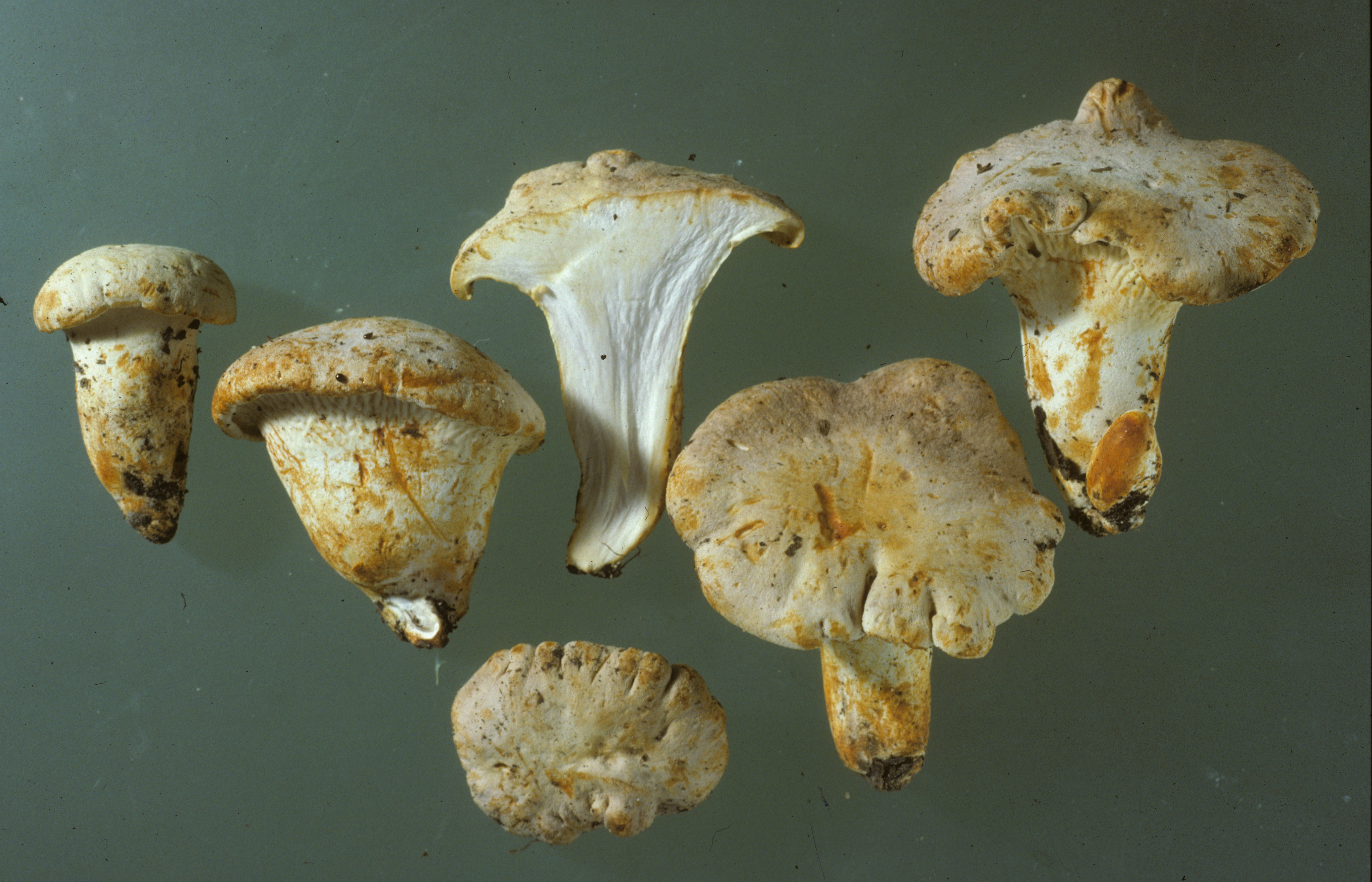- Proposed
- Under Assessment
- Preliminary Assessed
- Assessed
- LCPublished
Cantharellus ferruginascens P.D. Orton
- Scientific name
- Cantharellus ferruginascens
- Author
- P.D. Orton
- Common names
 Pale Chanterelle
Pale Chanterelle Siantrel Gwelw
Siantrel Gwelw Sarı Mantar
Sarı Mantar- IUCN Specialist Group
 Mushroom, Bracket and Puffball
Mushroom, Bracket and Puffball- Kingdom
- Fungi
- Phylum
- Basidiomycota
- Class
- Agaricomycetes
- Order
- Cantharellales
- Family
- Cantharellaceae
- Assessment status
- Published
- Assessment date
- 2020-12-31
- IUCN Red List Category
- LC
- Assessors
- Christine Tansey
- Reviewers
- James Westrip (IUCN Red List Unit)
Assessment Notes
Justification
Since the description of Cantharellus ferruginascens there have been some records of occurrence across a range of habitats in Europe, the Mediterranean and into the Middle East. It is also likely to have been recorded under other names, including the widespread C. cibarius. Without clear occurrence data it is difficult to assess the size of C. ferruginascens’ population, but it given its likely distribution and under-recording, this may be large.Under the assumptions that C. ferruginascens has a large range, occurs in a variety of habitats associated with a number of widely distributed species, and therefore has a sizeable population, it is tentatively assumed that C. ferruginascens is of Least Concern.
Geographic range
Cantharellus ferruginascens was described from Surrey in the UK and there are observations available on GBIF (2020) from 12 countries. Of these, only Korea is excluded from the known distribution here, as there is a single outlying record available, beyond the currently known European distribution and molecular verification of this record has been called for (Antonín et al. 2017).The type description of C. ferruginascens identifies it from under mixed trees, and it seems to have been recorded in associated with a variety of tree, grass and herb species, which suggests that its distribution may not be constrained by specific species.
Olariaga et al. (2017) state that C. ferruginascens is typically associated with deciduous Fagaceae and Betulaceae but that it has been observed in areas of a more Mediterranean climate and may be more widespread yet overlooked. More recently, this species has been documented in Türkiye and Iran (see Bulam et al. 2018, Parad et al. 2018), indicating that C. ferruginascens’ distribution may extend further east.
Population and Trends
Estimation of population requires a more thorough examination of data.
Cantharellus ferruginascens appears to have a wide distribution, and a range of associated tree species making up its habitat. It is likely to have been overlooked, or its records misattributed to other Cantharellus species, particularly C. cibarius and C. pallens. It is, therefore, tentatively assumed to have a larger, more widespread population than current occurrence data indicates.
Population estimates depend on the assumptions about the inferred range. Given the broad range of tree species thought to be associated with C. ferruginascens and the existing widely distributed records it can tentatively be assumed to occur across much of Europe and into the Middle East where appropriate habitat exists.
At present it is difficult to use habitat as a proxy for calculating the number of sites and potential population due to the uncertainty over how extensive the habitat is. Similarly, the population trend is also uncertain. The likely under-recording of this species, and varying habitat is means that it is not possible to use changes in habitat to infer rates of population change.
Population Trend: Unknown
Habitat and Ecology
The type description states that specimens are gregarious and found with mixed trees among Bromos ramosus and subsequent studies have examined specimens found with a variety of species, including in oak-beech forest and mixed hedges (Eyssartier and Buyck 2000).Olariaga et al. (2017) summarise Cantharellus ferruginascens as typically occurring in temperate areas not prone to summer drought, associated with deciduous Fagaceae (Castanea, Fagus, Quercus) and Betulaceae (Carpinus) on calcareous soil. They also note it is found in some Mediterranean localities, usually restricted to moist and humid sites, associated with Quercus suber and more acidic soils.
Recent literature on Turkish and Iranian populations of C. ferruginascens supports Olariaga et al.’s (2017) broad habitat categorisation. Iranian specimens have been found on moderate to slightly acidic soils under Fagus orientalis and Carpinus betulus (Parad et al. 2018) while Turkish C. ferruginascens occur in broadleaf and coniferous forests, particularly among beech, birch and pine (Bulam et al. 2018).
Threats
Specific threats may affect different habitats Cantharellus ferruginascens occurs in across its range, however due to some uncertainty about how broad its habitat is, these are not well documented.In parts of its range, C. ferruginascens is gathered for consumption and trade (e.g. Bulam et al. 2018, Parad et al. 2018), but whether this impacts the population is unknown.
Conservation Actions
Cantharellus ferruginascens appears on the Scottish Biodiversity List of species of principal importance for biodiversity conservation, under a watching brief only, as it is classified as rare in the UK through existing occurrence records.An evaluation of its distribution, population, habitat and ecology is required to better assess this species.
Identifying whether occurrence records of C. ferruginascens have been wrongly attributed to other species, and how widespread the species is across its range of associated habitats would help address the initial assumptions made in this assessment.
